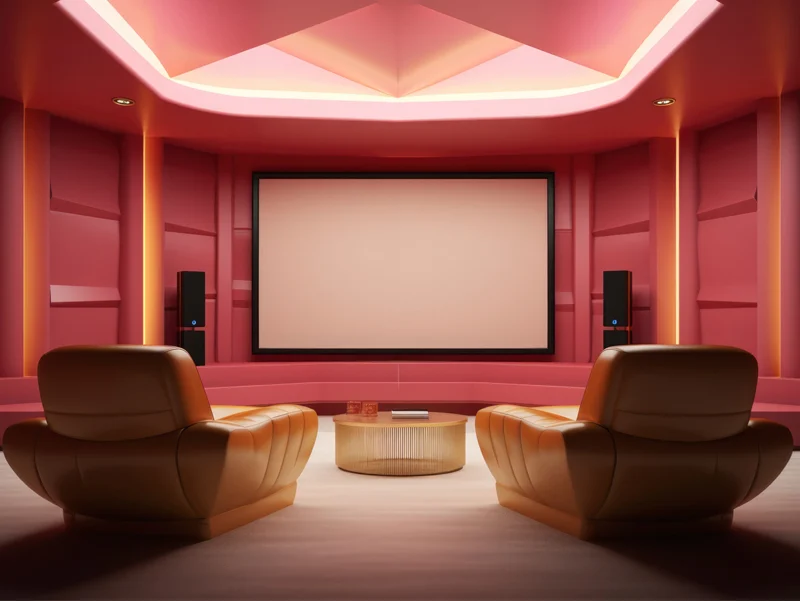
Designing a home theater involves creating an immersive experience that suits your space and lifestyle. It requires careful consideration of your room’s size, shape, and acoustics, along with factors like seating arrangements, wall materials, ceiling design, and ambient lighting
Interior materials play a crucial part in the home theater to improve the audio-visual experience by installing features such as in-ceiling speakers to provide immersive sound, acoustic treatments to absorb sound, and use of dark colors to reduce reflection.
Display screen, projector, sound system, and home theater seating are the four essentials that you must have in place when planning your media room. Having these four things right is essential for an immersive movie experience, no matter what part of the house you are converting into a home theater.
A well-designed ceiling plays a crucial role in enhancing the aesthetics and functionality of a home theatre. Dark-colored ceilings help reduce glare and reflections, ensuring a more immersive viewing experience. Meanwhile, false ceilings with integrated lighting, such as cove lights or LED strips, allow for ambient lighting control, helping set the perfect mood for movie nights. Acoustic ceiling panels can also improve sound quality by minimizing echoes and absorbing excess noise, making dialogues clearer and background scores more immersive. Whether you opt for a simple dark ceiling or an elaborate moulded design with layered lighting, the right ceiling choice can significantly elevate your home theatre experience.
The size of your room is crucial in deciding the best components for your home theater system. In larger spaces, you typically need more powerful speakers and a projector to create an immersive sound and visual experience that fills the area. Conversely, smaller rooms can perform well with soundbars and TVs, which are specifically designed to enhance audio-visual experiences in limited spaces.
The seating arrangement is also vital, as the positioning of speakers and the alignment of viewing angles are greatly influenced by how the seating is organized. Proper placement ensures that every viewer experiences optimal sound clarity and a clear view of the screen, which enhances the overall enjoyment. Budget considerations are another key aspect of the decision-making process.
Establishing a clear budget helps you prioritize the features that are most important to you, whether that’s exceptional sound quality, cutting-edge display technology, or smart home integration. This way, you can achieve the best value without going overboard on spending. For the ideal setup, seeking professional advice can be invaluable.
Ceiling experts can evaluate your room’s dimensions, acoustics, and lighting conditions while taking your personal preferences into account to design a customized system that meets your needs. This tailored approach not only maximizes performance but also boosts your overall satisfaction with the home theatre experience.